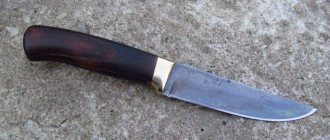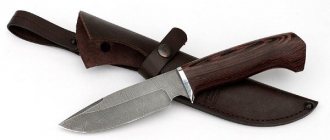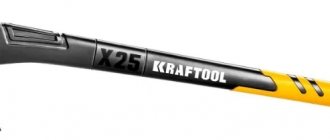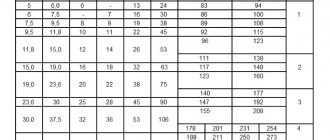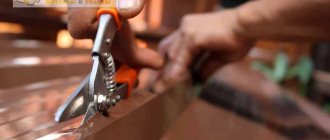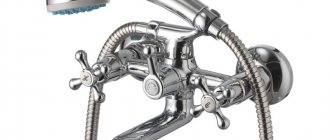Every hunter wants the best quality steel for their hunting knife. Today there are many different hunting knives available, which differ in shape, size, blade length, handle, steel grade, etc.
If you are going to buy a knife for hunting for the first time, then you need to familiarize yourself with the main characteristics and indicators that real knives of this type should have.
When hunting, you simply can’t do without a reliable blade, which will help not only remove the skin from the captured trophy, but also protect yourself from attack from a predator at the right time. The knife must be very durable, hard and comfortable to use.
How can you understand steel for a hunting knife when there are so many of them that it’s difficult to even remember everything, otherwise you also need to understand all the features. Of course, an inexperienced hunter cannot cope with such a task.
You can consult the seller directly about this, but he may not be professional enough or may deliberately sell you a copy of poor quality.
In a few seconds, we will begin to understand with you all the intricacies of this topic, so that the question of choosing a knife is not in front of your eyes. Let's consider the main parameters and indicators by which you should choose a hunting knife. In addition, we will consider the main grades of steel that are used in the production of blades.
Which steel is best for a hunting knife?
By its nature, a hunting knife is a multifunctional tool that allows you to perform many tasks. Thus, the metal of such a knife must have high strength, hardness and durability.
An important point is its ability to cut well, because during hunting such a need is always present. To ensure such characteristics, carbon, damask, Damascus, powder or alloy steel is used.
Carbon is added to their composition, which gives hardness to the blade. If there is more of it in the composition, then the cutting surface retains its sharpness longer.
There is a special HRC coefficient that determines the hardness level of steel. For a hunting knife, the best coefficient is considered to be no lower than 55-60 HRC.
Of all the variety, knives made of damask and Damascus steel have become very popular. Both of these types are characterized by good cutting properties and no need for constant sharpening.
Requirements for knife material
The operating conditions of hunting equipment are often close to extreme. Constant exposure to moisture, high loads on the blade - all this places special demands on the material of manufacture. Ideally, a hunting knife should successfully perform the functions of a small ax and at the same time have a razor edge.
It must also meet the following requirements:
- Hardness value (HRC). Optimal - 55-60 units. However, it should not have a negative effect on increasing fragility and reducing ductility.
- Anti-corrosion properties. With prolonged exposure to moisture and materials of biological origin, rust should not appear on the surface of the blade.
- Preservation of the original sharpening. It directly depends on the hardness and configuration of the cutting part. To achieve this, two types of steel can be used in manufacturing - with high hardness for external protection, soft - for forming an edge.
You also need to pay attention to the configuration of the blade and its shape. The working length of the blade and the sharpening location are taken into account. If a hunting knife is used without a license, its parameters must comply with the current legislation. Read more about the rules for choosing a knife here.
Main characteristics and parameters of steel
A hunting knife should first of all cut well, and not chop or saw. All alloys according to this indicator are divided into high-carbon and low-carbon steels.
It is worth remembering that adding carbon to levels of more than 2.14% leads to the transformation of steel into cast iron. It rusts quickly and is brittle, which is no longer suitable for blade production.
The main steel parameters:
- strength;
- hardness;
- corrosion resistance.
Strength is the characteristic that prevents chipping during use. If the knife is strong, it will bend under heavy load, but will not break.
Hardness is measured in HRC. For good hunting knives it should be within 55-60 HRC. If this indicator is higher, it will lead to fragility. In addition, sharpening such knives will be very difficult.
Blades are constantly exposed to the external environment, so they often begin to rust. You can increase corrosion resistance only if you worsen other indicators.
Sometimes you can find blades on the market that are dark in color. This means that they are coated with titanium. It increases hardness to 90 HRC.
This coating allows you to increase protection from corrosion, extend the life of the factory sharpening, and leave the strength at the same level.
Attention to the blade
Don’t chase a high price, choose a steel that you don’t mind spending money on. In order to cut up a chicken once a year, it is not necessary to buy a combat blade or a handmade product made of damask steel or Damascus steel.
In general, you should choose steel for hunting knives based on the area of use. Take into account your laziness, even if the steel grade of the knife is the best, it will quickly deteriorate and become corroded from lack of care.
Remember, even the sharpest knife will eventually become dull and will have to be sharpened. There is no such thing as an eternal sharpening that will last for years with constant use.
Additives for steel
To improve some characteristics of steel, special alloying additives are used, which improve the quality of the knife.
Chrome . It is added to increase the level of corrosion protection.
Nickel . Helps increase strength and improves protection against rust.
Manganese . Provides the ability to forge metal. This allows you to produce a blade of any shape.
Vanadium . It makes the steel stronger and more durable, and also increases its resistance to stress.
Silicon . Gives steel strength and makes it possible to forge the metal.
Tungsten . The metal becomes resistant to scratches, its strength and resistance to corrosion increases.
Molybdenum . With this addition, the knife becomes very durable and resistant to the heaviest loads. Its price increases significantly.
Rules for choosing a great knife
We will not burden you with such subtleties as steel grade and alloy structure. We will only tell you about the main “tricks” so that you can choose a high-quality and good knife that will serve you for many years and will never let you down.
What to pay attention to:
1. Steel
Knives are made from various grades of steel; steel can have different chemical compositions and alloy structures. But as we have already said, we will not dwell on this. Let’s just say that fairly good hunting knives use 440C steel (110X18). It is quite easy to sharpen and remains sharp for a long time. The hardness of this steel is 58-60 HRC, which is more than enough.
If we take into account that a fisherman’s or hunter’s knife should cut well, but not saw, stab, etc. (there are other tools for these purposes), then you should focus on grades from 55 to 60 HRC. Below is too soft metal that quickly dulls. This means that the cutting edge will have to be constantly sharpened. Blades over 60 have their own difficulties. This steel is characterized by hardness, and in the field its manual processing will be a big problem. In addition, the blade made from it is not flexible, so it is easy (with excessive force) to break, which is not uncommon when fishing or hunting.
Table of steels (grade, chemical composition and hardness):
The practice of using knives for fishing or hunting shows that a blade of 10–12 cm is quite sufficient. This tool is convenient to use and carry with you.
2. Handle
Form
The choice of this parameter is individual. Buying a knife just because it looks impressive on a store counter (its window, in an advertising brochure) is pointless. The handle of the knife should fit snugly in the hand, without causing inconvenience to the hunter or fisherman, no matter what movement he makes with the hand. In addition, few people take into account the fact that this tool has to be used year-round. Hunters conduct their fishing mainly in the cold season, and there are many fans of winter fishing among us.
Therefore, simply holding the knife in your hand and making a couple of movements is not enough. Will it be convenient to use if you have to wear gloves? Wouldn't the palm move down from the handle onto the sharp blade? In this regard, it is advisable to focus on models with a limiter. Under no circumstances will he allow his hand to slip.
Choosing survival knives - review and video of the best options
Handle material
The debate on this issue, judging by the numerous reviews and comments on thematic sites, is endless. The author invites the reader to decide for himself which handle to choose, based on some properties and features of the materials.
Plastic. These knives are quite popular. The handle does not get dirty, is easy to clean, and has sufficient strength. Only two disadvantages can be noted: at low temperatures there is a risk of cracks and chips; Almost all types of plastics “do not like” contact with aggressive substances. How relevant is this for hunting and fishing?
Wood. She needs to be constantly monitored. Firstly, it is easily damaged, and if handled carelessly, scratches or nicks cannot be avoided. Secondly, the handle of such a knife will have to be regularly treated with impregnations and varnish, otherwise it will gradually begin to swell and deform.
Bone. The high price (if it is not a fake) is the main disadvantage. For a fisherman or hunter, the practicality of the knife and ease of use of the tool are primarily important, and not whether its handle will cause admiration among his companions.
If you prefer natural materials, then take wood or leather, but it is worth noting that modern handles made of synthetics (plastic) are no worse than wooden ones, and in some respects even better.
They also fit comfortably in the hand and require virtually no maintenance, do not absorb dirt and odors, do not crack when wet and do not change color. Although wood has its own advantage - your hands do not freeze, which cannot be said about the horn handle.
3. Sheath
Here it is short - they must have a special (usually plastic) insert. Otherwise, such scabbards are short-lived. They will be cut up quite quickly by the blade.
This is especially true if the scabbard is made of leather. During the tanning process, substances are used that have a negative effect on the steel. If a knife is in such a “case” for a long time, then its blade will quickly become covered with dark spots, which are quite difficult, and sometimes impossible, to get rid of.
What not to choose:
- A knife with a hollow handle, which often has a compass built into it. Firstly, such a handle is not durable, and if it is also plastic, it will not last long in winter, it has been tested. Secondly, such a convenient device as a built-in compass is nothing more than decoration, a “toy” for adults. Practical benefit - zero. It is useless to navigate; it gives such errors that it is unlikely to be possible to find the way back.
- Knives with decorative notches on the handle. This is more suitable for gift options. That is, products that no one will use in the field. Various ribs, protrusions, and spikes cause a lot of inconvenience, and the hand gets tired quickly. Therefore, it is not an option for hunters and fishermen.
Purpose and design
Difficulties arise mainly when choosing a folding knife. The main difference between all models is the type of locking connection. Without considering all the varieties, it is enough to note that for fishing or hunting, taking into account the specifics of the application, the best choice is the simplest mechanism. It is called a linear lock. It is a narrow spring-loaded steel plate recessed into the handle of the knife.
When choosing a model, you need to check:
- blade play. Moreover, in all directions (sideways, up);
- reliability of blade fixation in working position;
- how conveniently the knife folds/unfolds, is there any misalignment of the blade relative to the longitudinal axis of the handle.
Tuning Sable 4x4 for hunting and fishing with your own hands: modification of chassis, steering, engine
Even a small “shak” of the blade (no matter how the seller assures you otherwise) is a guarantee that the tool will soon have to be thrown away as unnecessary.
For fishing or hunting, it is advisable to purchase a knife in a specialized store. To save time, just tell the seller that you are interested in clip-point models, and he will immediately understand what we are talking about. These knives are universal, for all occasions.
You should decide for what purposes you will most often use your knife. If you need a knife to cut up a carcass and remove the skin from a killed animal, then you need a hunting knife with a not very long blade - up to 16 cm, this is the most convenient option in this case. If you want to use it for cutting branches and wood chips for the fire, then you need a heavier one. Although a camp hatchet is best suited for this.
Since our site is dedicated to survival, it is worth mentioning another category - survival knives. This is the so-called universal option for all cases of extreme life. This knife can be used as a cutter, axe, machete or saw.
Design and shape
Everyone has their own preferences regarding the shape of the blade. But if you think about the durability of the knife, then the best choice of profile is the so-called “wedge”, and with a supply. Its peculiarity is that the working edge is sharpened at a slightly different angle. For a knife of universal use, its optimal value is 35±50. This tool is convenient for skinning animals, butchering fish, and cutting bread.
Despite the variety, there are three main designs of hunting knives.
Drop Point
The main difference is a blade with a wide and thick blade, the cutting part of which is in the middle of the blade, and in the upper part the blade is blunt. The blade also has a rather sharp nose. This knife is very convenient for skinning and convenient for cutting large game.
Skinner
The blade of this knife is shorter than that of a drop point knife and is strongly rounded; the blade does not have a sharp nose. The main purpose is to remove the skin from a killed animal. This is the so-called “skinning knife”.
Clip point
A hunting knife for all occasions. It has a longer and narrower blade; it can also be used to cut game, but its main task is for household needs. If you are not a hunter, but just like to hike and often get out into nature, then this option is just for you.
If you are engaged in tourism, then a universal survival knife will cope with almost any task; you can use it to open canned food, prepare wood chips for kindling a fire, and butcher the carcass of a killed animal.
But it is best to have several knives with different purposes, because for a specific purpose it is much more convenient to use the knife that is specifically designed for this purpose.
Experienced people will tell you how to choose the right blade, and you will also see tests and reviews of some knife models:
What brand of steel should you choose for the knife?
During the production of hunting knives, a wide variety of steel grades are used, which are represented not only by foreign copies, but also by domestic versions.
If you need a knife with high strength, then it is better to use steel grades U8, U9 and U10. In addition, the 40X steel grade has proven itself well.
If we talk about foreign brands, then AUS 6, AUS 8, AUS 10 have proven themselves well, which by analogy correspond to our brands 440 A, 440 V, 440 C.
From the Americans, 155CM steel gained great popularity, and from the Japanese, ATS-35 steel gained popularity. Many consider these brands to be the best for hunting knives.
How to choose the best
The best knife for hunting is the one that is convenient and easy for a particular person to work with. To put it simply, it is different for everyone. In some ways, this is a matter of habit, in some ways it is a conscious choice, but in any case, you need to adhere to several rules that will allow you to choose the ideal option.
In order to choose high-quality knives, you must first look at the geometry of the blade. It is this factor that ensures the most efficient performance of the main task of the tool - cutting.
The most sensible option is a wedge-shaped thin blade. It cuts well, but gets dull very quickly due to its small thickness.
In order to increase the “life” of sharpening, the geometry is changed slightly, thickening the metal. A hunting bladed weapon must be not only sharp, but also durable.
The handle is also important.
A hunting knife should:
- Do not slip in your hand;
- To be safe means to have a limiter;
- The handle must be strong so that the blade does not fly off at the wrong moment;
- The blade should fit tightly and securely into the handle;
- It is worth remembering that the most beautiful knife with an elaborate handle is usually only suitable for symbolic collections, and not for long-term work.
Steel knives can be equipped with a handle made of any material. Some hunters like wood because it quickly warms up in the hand in the cold, it is pleasant to the touch, beautiful, while some like metal because it is reliable. Each specific handle, depending on the numerous ways it is created, may have its own advantages and disadvantages, so information needs to be clarified about a specific model.
Please note that a folding knife for hunting must have a high-quality mechanism. To check this, you need to try to “shake” the blade. If it deviates slightly, even if it is barely noticeable, the product is not of high quality and will most likely quickly fail. In addition, the mechanism itself must securely fix the blade so that the buyer does not lose his fingers one day, and it is also important that it opens and closes easily enough.
The best folding knife in the world is the one that was bought at the right time. They will not be able to cut up a carcass for a long time or perform other specific work on an ongoing basis, but this is a universal and compact product that will cover and help in case of need.
Let's look at how to choose the right knife:
- First of all, you need to start from what exactly you plan to do with the tool.
- A high-quality product will be more expensive, but compared to consumer goods, it will last much longer - this will pay off.
- You need to immediately think about where and how it will be worn; the best hunting knife should not fall out of your pocket while running or rattle annoyingly in your backpack against a cup.
- First of all, look at the geometry of the blade, and only then at the steel.
- For work, buy a comfortable knife, not a fashionable or the most beautiful one.
That's all the basic rules for choosing a good hunting blade.
Which knife manufacturer should you choose?
The best knives are produced by world leaders, among which the German Solingen, the Swiss Wenger, the English Winkison and some other companies stand out.
Particular attention should be paid to German craftsmen who make incredible knives in quality and design. Their work has a very high price, but the service life of such knives will last for many years.
In addition, Finland, the USA, Sweden and Japan proudly declare their products, which are also characterized by high quality hunting knives.
If we talk about domestic manufacturers of these products, then we need to pay attention to the Kizlyar and Zlatoust plants. They produce knives using modern technologies, so they are not inferior to many foreign analogues, and in some of them they are even superior.
Weapon care
Regardless of what steel the blades are made of, they need care.
It is essentially simple:
- Once you use it, wash it, because even the most beautiful knives can quickly lose their appearance and, worse, their practicality.
- Lubricate the blade regularly with gun oil to prevent corrosion.
- If the handle is wooden, also periodically treat it with oil to prevent it from drying out.
- Store and carry your hunting blade in a sheath or a special case if it is a folding product.
- Don’t do things that a blade shouldn’t do by its nature – don’t chop wood, don’t pick holes in a fence, and so on.
Also, one of the main rules of care is to constantly improve your skill in use; hunting knives are loved by professionals.
Choosing good steel knives for hunting is difficult, however, if you understand the topic a little and make an effort, everything will turn out as good as possible. The main thing is to weigh your decision well before making the final purchase.
